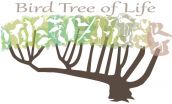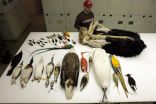(Press-News.org) How much protection the annual flu shot provides depends on how well the vaccine (which is designed based on a "best guess" for next season's flu strain) matches the actually circulating virus. However, it also depends on the strength of the immune response elicited by the vaccine. A study published on December 11th in PLOS Pathogens reports that genetic variants in a gene called IL-28B influence influenza vaccine responses.
Adrian Egli, from the University of Basel, Switzerland, and colleagues started with blood samples from organ transplant patients. Such patients are at elevated risk from infections because their immune system is dampened by immune-suppressive drugs used to prevent rejection, but under these circumstances, vaccines generally do not work well. Vaccine developers are trying to improve vaccines for transplant recipients and other people with a weak immune system, and the samples used in this study came from a clinical trial of different versions of a flu vaccine in patients on immune-suppressive drugs.
Because previous studies had suggested that different alleles (versions) of the IL-28B gene affect immune responses, the researchers determined which alleles the transplant recipients carried. Like for most genes, each person has two copies of the IL-28B gene. For the particular variant of interest, one version, the T allele is more common, and of 196 patients, 135 had two copies of the T allele. Of the remaining 61 patients, 54 had one copy of T allele and one copy of the minor G allele, and 7 patients had two copies of the G allele.
The researchers found that individuals who had at least one copy of the minor allele were more likely to achieve seroconversion (i.e. have detectable antibodies against the particular influenza strain) after vaccination. The difference was particularly pronounced for people on high doses of immune-suppressant drugs. To understand how the different alleles influence the immune response to vaccination, the researchers next looked in more detail at immune cells from 47 of the patients (34 had two major T alleles, and 13 had at least one minor G allele).
They found substantial differences following influenza vaccination in the production of immune-modulators that determine the type of T-cell response and in the proliferation and production of antibodies by B cells. Adding more IL-28B to the growth medium of T- and B-cells, made the cells behave more like those from major allele carriers, with a marked reduction of B-cell activation and antibody production.
To see whether the results are relevant for people who do not take immune-suppressant drugs, the researchers enlisted a group of healthy volunteers (28 with two major T alleles and 21 who carried at least one minor G allele). They found that minor allele carriers had less IL-28B gene product activation stronger antibody immune response to influenza vaccination. And when they pre-treated immune cells from vaccinated major allele carriers with a molecule that inhibits the receptor that is normally stimulated by IL-28B, they saw a stronger antibody response after the cells were stimulated with influenza vaccine.
Their results, the researchers conclude, identify IL-28B as a key regulator of the immune response to influenza vaccination. They suggest that blockage of the IL-28B receptor could offer a novel strategy to boost the antibody response to influenza vaccine and others, thus opening up a new avenue for developing novel vaccine adjuvants and immunotherapeutic drugs.
INFORMATION:
Please use this URL to provide readers access to the paper (Link goes live upon article publication):
http://dx.plos.org/10.1371/journal.ppat.1004556
Contact:
Adrian Egli
e-mail: a.egli@usb.ch
phone: +41.61.556.5749
Authors and Affiliations:
Adrian Egli, University of Basel, Switzerland, and University of Alberta, Canada
Deanna M. Santer, University of Alberta, Canada
Daire O'Shea, University of Alberta, Canada, and University of Alberta, Canada
Khaled Barakat, University of Alberta, Canada
Mohammedyaseen Syedbasha, University of Basel, Switzerland
Madeleine Vollmer, University of Basel, Switzerland
Aliyah Baluch, Moffitt Cancer Center, USA
Rakesh Bhat, University of Alberta, Canada
Jody Groenendyk, University of Alberta, Canada
Michael A. Joyce, University of Alberta, Canada
Brad S. Thomas, University of Alberta, Canada
Manuel Battegay, University of Basel, Switzerland
Nina Khanna, University of Basel, Switzerland
Thomas Mueller, University Hospital of Zurich, Switzerland
Luiz F. Lisboa, University of Alberta, Canada
D. Lorne J. Tyrrell, University of Alberta, Canada
Michael Houghton, University of Alberta, Canada
Atul Humar, University Health Network, Canada
Deepali Kumar, University Health Network, Canada
Please contact plospathogens@plos.org if you would like more information.
Citation: Egli A, Santer DM, O'Shea D, Barakat K, Syedbasha M, et al. (2014) IL-28B is a Key Regulator of B- and T-Cell Vaccine Responses against Influenza. PLoS Pathog 10(12): e1004556. doi:10.1371/journal.ppat.1004556
Funding: This work is partly funded by a grant from the Li Ka Shing Institute of Virology. AE research is supported by a salary research grant by the Swiss National Science Foundation (PBBSP3-130963) and a Lichtenstein Foundation grant. AL is supported by the Banting Postdoctoral Fellowship Program, administered by the Government of Canada and by Alberta Innovates Health Solutions Postdoctoral Fellowship, DMS is supported by Canadian Institutes of Health Research and Alberta Innovates Health Solutions Postdoctoral Fellowships, BST is supported by the National CIHR Research Training Program in Hepatitis C (NCRTP-HepC), LFL is supported by a research Fellowship grant from the Canadian Society of Transplantation, MH is supported by the Canada Excellence Research Chair (CERC) in Virology award. DLJT is supported by a grant of the Canadian Institute of Health Research. The funders had no role in study design, data collection and analysis, decision to publish, or preparation of the manuscript.
Competing Interests: The authors of this manuscript have conflicts of interest to disclose as D.K. and A.H. have received research support from HoffmannLaRoche. This does not alter our adherence to all PLOS policies on sharing data and materials.
New circulating metabolites might allow early diagnosis of cardiovascular disease. A team of scientists from Uppsala University, Karolinska Institutet and Colorado State University have identified novel lipid-derived molecules associated with future coronary heart disease events. The study published in the journal PLOS Genetics has examined the metabolic profile of blood samples from more than 3,600 individuals that have been followed-up for up to 10 years.
Professor Erik Ingelsson and graduate student Andrea Ganna have used novel biochemical and bioinformatics approaches ...
CHAMPAIGN, Ill. -- An international effort involving more than 100 researchers, nine supercomputers and about 400 years of CPU time has yielded the most reliable avian tree of life yet produced, researchers report in the journal Science. The tree reflects the evolutionary relationships of 48 species of birds.
The paper describing the bird family tree is one of eight articles on avian evolution published together in Science. The overall endeavor was coordinated by Erich Jarvis of Duke University; M. Thomas P. Gilbert of the Natural History Museum of Denmark; and Guojie ...
Crocodiles are the closest living relatives of the birds, sharing a common ancestor that lived around 240 million years ago and also gave rise to the dinosaurs. A new study of crocodilian genomes led by scientists at UC Santa Cruz reveals an exceptionally slow rate of genome evolution in the crocodilians (a group that includes crocodiles, caimans, alligators, and gharials).
The UC Santa Cruz team used the crocodilian genomes, combined with newly published bird genomes, to reconstruct a partial genome of the common ancestor of crocodiles, birds, and dinosaurs. The study, ...
Conventional wisdom holds that changing the views of voters on divisive issues is difficult if not impossible -- and that when change does occur, it is almost always temporary.
But Michael LaCour, a UCLA doctoral candidate in political science, and Donald Green, a Columbia University political science professor, have demonstrated that a single conversation can go a long way toward building lasting support for a controversial social issue. In addition -- nearly as surprisingly -- the effect tends to spill over to friends and family members.
The key is putting voters ...
A new computational technique developed at The University of Texas at Austin has enabled an international consortium to produce an avian tree of life that points to the origins of various bird species. A graduate student at the university is a leading author on papers describing the new technique and sharing the consortium's findings about bird evolution in the journal Science.
The results of the four-year effort -- which relied in part on supercomputers at the university's Texas Advanced Computing Center (TACC) -- shed light on the timing of a "big bang" in bird evolution, ...
RIVERSIDE, Calif. - The absence of teeth or "edentulism" has evolved on multiple occasions within vertebrates including birds, turtles, and a few groups of mammals such as anteaters, baleen whales and pangolins. Where early birds are concerned, the fossil record is fragmentary. A question that has intrigued biologists is: Based on this fossil record, were teeth lost in the common ancestor of all living birds or convergently in two or more independent lineages of birds?
A research team led by biologists at the University of California, Riverside and Montclair State University, ...
LOS ANGELES, Dec. 11, 2014-- It's possible to lastingly persuade conservative voters to support a controversial issue like marriage for same-sex couples--and at a greatly accelerated rate compared to their neighbors--according to groundbreaking data published in this week's issue of the peer-reviewed journal Science. The 12-month study also shows how the Los Angeles LGBT Center's voter persuasion methods reduced anti-gay prejudice and may have the potential to reduce other forms of prejudice.
The independent researchers who led the study, prominent Columbia University ...
This news release is available in Danish and also Chinese on EurekAlert! Chinese.
An international effort to sequence the genomes of 45 avian species has yielded the most reliable tree of life for birds to date. This new avian family tree helps to clarify how modern birds--the most species-rich class of four-limbed vertebrates on the planet--emerged rapidly from a mass extinction event that wiped out all of the dinosaurs approximately 66 million years ago.
It reveals how some of the earliest bird species diverged, answering many long-standing questions about the common ...
SALT LAKE CITY, Dec. 11, 2014 - University of Utah researchers ran biochemical analysis and computer simulations of a livestock virus to discover a likely and exotic mechanism to explain the replication of related viruses such as Ebola, measles and rabies. The mechanism may be a possible target for new treatments within a decade.
"This is fundamental science. It creates new targets for potential antiviral drugs in the next five to 10 years, but unfortunately would not have an impact on the current Ebola epidemic" in West Africa, says Saveez Saffarian, senior author of ...
(SALT LAKE CITY) - Examination of DNA from 21 primate species - from squirrel monkeys to humans - exposes an evolutionary war against infectious bacteria over iron that circulates in the host's bloodstream. Supported by experimental evidence, these findings, published in Science on Dec. 12, demonstrate the vital importance of an increasingly appreciated defensive strategy called nutritional immunity.
"We've known about nutritional immunity for 40 years," says Matthew Barber, Ph.D., first author and postdoctoral fellow in human genetics at the University of Utah. "What ...




